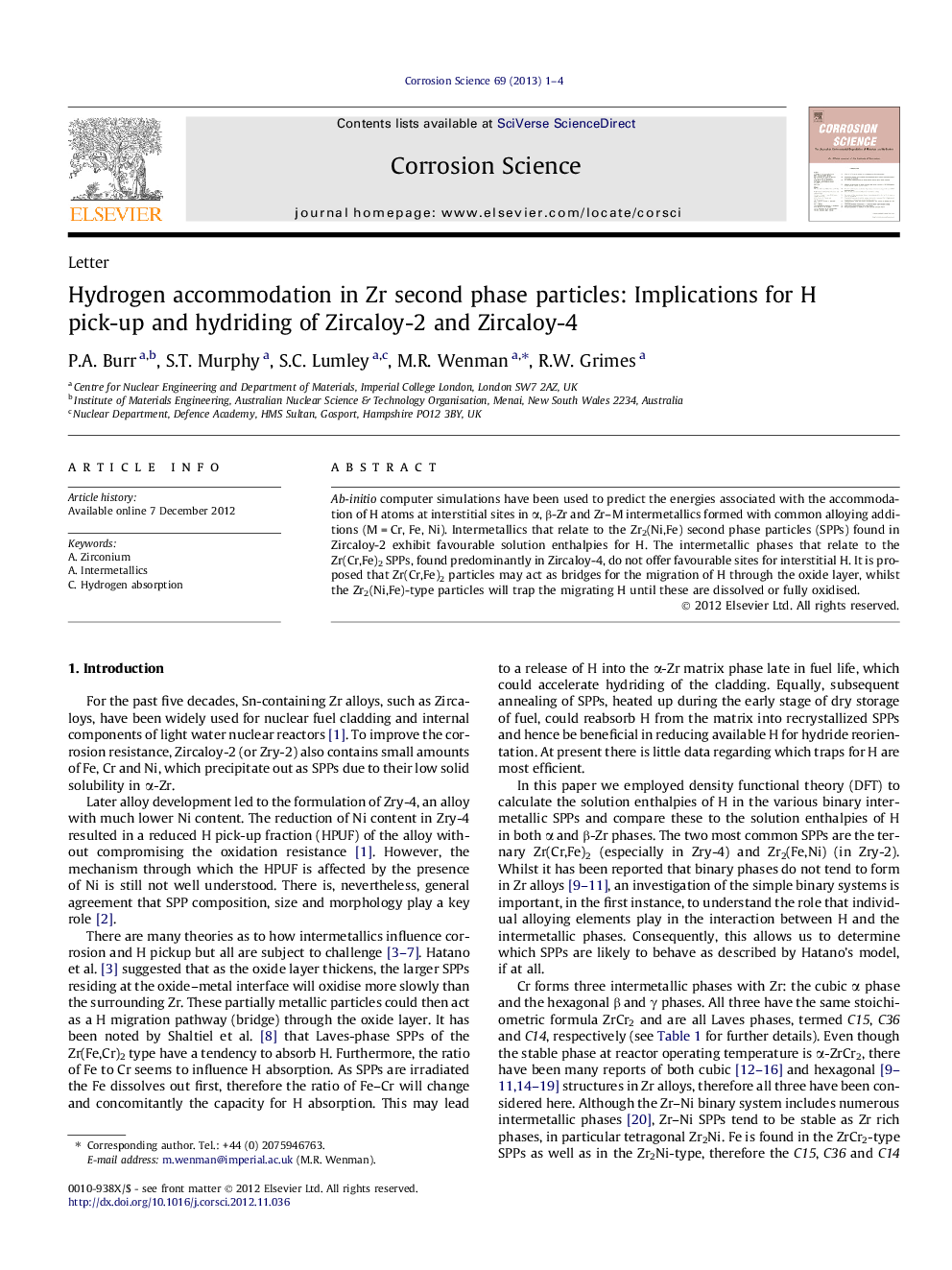| Article ID | Journal | Published Year | Pages | File Type |
|---|---|---|---|---|
| 1469234 | Corrosion Science | 2013 | 4 Pages |
Abstract
Ab-initio computer simulations have been used to predict the energies associated with the accommodation of H atoms at interstitial sites in α, β-Zr and Zr–M intermetallics formed with common alloying additions (M = Cr, Fe, Ni). Intermetallics that relate to the Zr2(Ni,Fe) second phase particles (SPPs) found in Zircaloy-2 exhibit favourable solution enthalpies for H. The intermetallic phases that relate to the Zr(Cr,Fe)2 SPPs, found predominantly in Zircaloy-4, do not offer favourable sites for interstitial H. It is proposed that Zr(Cr,Fe)2 particles may act as bridges for the migration of H through the oxide layer, whilst the Zr2(Ni,Fe)-type particles will trap the migrating H until these are dissolved or fully oxidised.
Related Topics
Physical Sciences and Engineering
Materials Science
Ceramics and Composites
Authors
P.A. Burr, S.T. Murphy, S.C. Lumley, M.R. Wenman, R.W. Grimes,
